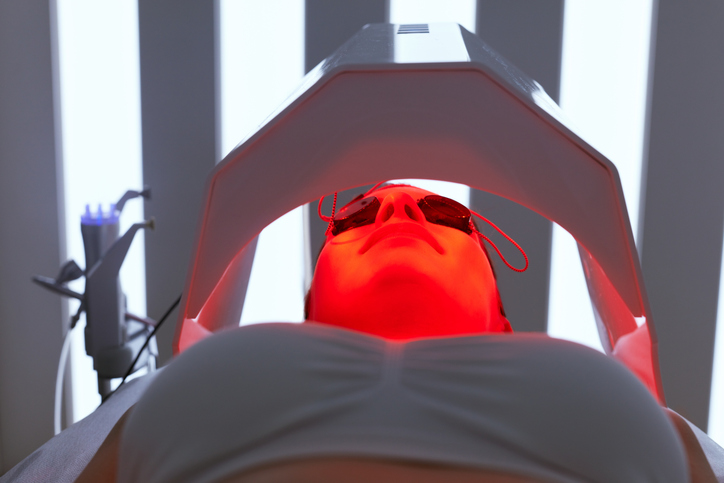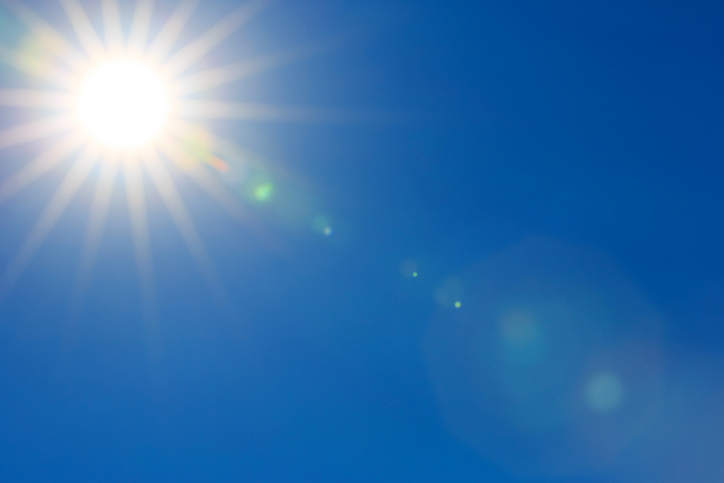If You’re Not Getting Enough Sunlight, Try Red Light Therapy

Sunlight is perhaps underrated because it is not something that we can eat. But we might want to add it to the arsenal of things we need to be healthy and happy.
"Our bodies evolved over the years under the sun's light, including developing light-sensing genes called opsins," said Dr. Richard Lang, a developmental biologist and senior author of a recent study about how light affects energy metabolism in mice (referenced in this report ).
"But now we live so much of our days under artificial light, which does not provide the full spectrum of light we all get from the sun."

Inadequate exposure to sufficient sunlight may cause a person to feel depressed. This kind of depression has been referred to as seasonal affective disorder (SAD), which usually occurs during the winter months when there is less sunlight and people tend to spend more time indoors.
What you may not know is that being deprived of sunlight may also increase your risk of developing metabolic syndrome.
This all might have to do with our fat cells.
We all have fat cells deep under our skin that actually responds to light. (This may sound odd because it would appear that they are in a hidden location).
According to Dr. Lang, even when we are wearing clothing light does get inside of our bodies, and this light appears to affect how cells behave.
“And when bodies do not get enough exposure to the right kinds of light, fat cells behave differently,” according to one recent study.
What are the right kinds of light?
“Many people understand that certain wavelengths of light can be harmful, such as gamma radiation from a nuclear bomb or too much ultraviolet light from the sun burning our skin. This study from Lang and colleagues describes a different, healthy role for light exposure,” according to the report. Basically, the researchers were studying how mice control their body temperature.
“What they found has implications far beyond describing how mice stay warm.”
The study involved exposing mice to colder temperatures (around 40° F). Both mice and humans shiver to keep warm when cold.
(Shivering is when the muscles contract and expand very quickly, which helps produce heat and warm our bodies when we are cold).
Humans and mice also use an “internal fat-burning response” to try to keep warm.
The researchers found that this whole internal heating process essentially malfunctions when the body is not exposed to a particular type of light.
“Deeper analysis revealed that the internal heating process is compromised in the absence of the gene OPN3 and exposure specifically to a 480-nanometer wavelength of blue light. This wavelength is a natural part of sunlight but occurs only in low levels in most artificial light,” according to the report.
So when exposure to this light occurs, OPN3 encourages white fat cells to release fatty acids into the bloodstream.
“Various types of cells can use these fatty acids as energy to fuel their activities. But brown fat literally burns the fatty acids (in a process called oxidation) to generate heat that warms up the chilly mice.”
The body stores two types of fat cells: white and brown fat cells. You want more of the brown than you do the white. Having a lot of white fat may cause you to become obese, but brown fat “...consumes energy, which is the reason why it could be important for preventing obesity and diabetes,” (ScienceDaily).
The results of the study revealed:
- Mice that were bred to lack the OPN3 gene did not warm up as quickly as other mice when placed in chilly conditions.
- To the surprise of the researchers, the mice that did have this gene did not warm up when exposed to light that did not have the blue wavelength.
“This data prompted the team to conclude that sunlight is required for normal energy metabolism [which involves the breakdown of fat]. At least in mice.”
And although more research is needed in order to determine that the same goes for humans, the researchers suspect that humans depend on natural light for normal energy metabolism as mice do.
How can we be proactive about making sure we get enough of the right kinds of light?
Obviously, spending some time in the sun is important. But the reality is that it’s hard for people to get outside as often as they may need to due to having jobs that keep them indoors all day or living in climates and areas where there is limited sun during certain times of the year. The recent pandemic and resulting stay-at-home orders make it even more difficult for people to get out and be active in the sun.
This is where red light therapy may be a great thing to consider implementing in your proactive healthcare routine.
Red light therapy is a form of low-level laser (light) therapy (LLLT) and is offered in many medical office settings.
Think of it as like a healthy tanning bed. During a session, the light delivers wavelengths of natural red and near infrared light. It’s like the wavelengths you get from sunlight without the harmful UV rays.
To be more specific, “The painless procedure penetrates the skin up to eight to 10 millimeters, surprisingly without producing heat. When this happens, it improves cellular energy and metabolic processes. The person at the receiving end cannot feel anything physically moving through them since the energy density is lower than other laser therapies,” according to this source.
“Although the skin is the organ that is naturally exposed to light more than any other organ, it still responds well to red and near-infrared wavelengths,” according to the National Institutes of Health (NIH).
What’s really interesting about red light therapy is that NASA used it to help keep astronauts healthy while in space. Furthermore, “In a two-year clinical trial, cancer patients undergoing bone marrow or stem cell transplants were given a far red/near infrared Light Emitting Diode treatment called High Emissivity Aluminiferous Luminescent Substrate, or HEALS, to treat oral mucositis -- a common and extremely painful side effect of chemotherapy and radiation treatment,” reports NASA.
“The trial concluded that there is a 96 percent chance that the improvement in pain of those in the high-risk patient group was the result of the HEALS treatment.”
In addition to this, the National Institutes of Health reports that red light therapy may also help with psoriasis, acne, wrinkles, burns and other skin issues.
Many celebrities including Kim Kardashian, who has psoriasis, use red light therapy.
"I'm sitting under a red lamp and this red light therapy helps you target the areas that you want to slim down. I think it melts fat, in fact," said 47-year-old reality TV star Mercedes “MJ” Javid, who recently had a baby.
(As always, eating healthily and exercising regularly are imperative when it comes to fat loss and maintaining a healthy weight).
Whether you are interested in red light therapy for fat loss, skin issues, pain or anything else, it is imperative to first seek the advice of a competent healthcare professional (especially if you are pregnant, breastfeeding or have any existing health issues).
And remember to try to get some sunlight into your life when you can! Go for a walk on your lunch break or take a hike while practice social distancing this weekend.
Enjoy your healthy life!
The pH professional health care team includes recognized experts from a variety of health care and related disciplines, including physicians, attorneys, nutritionists, nurses and certified fitness instructors. This team also includes the members of the pH Medical Advisory Board, which constantly monitors all pH programs, products and services. To learn more about the pH Medical Advisory Board, click here.







